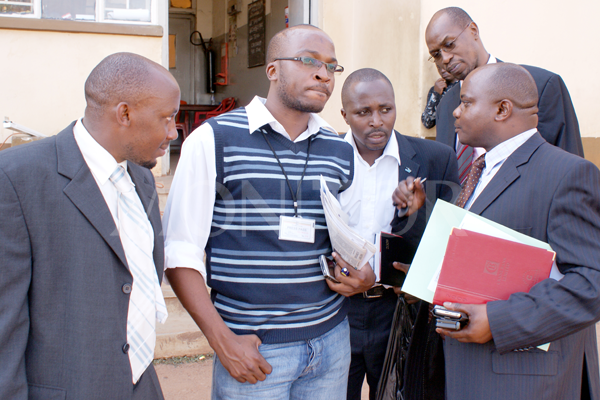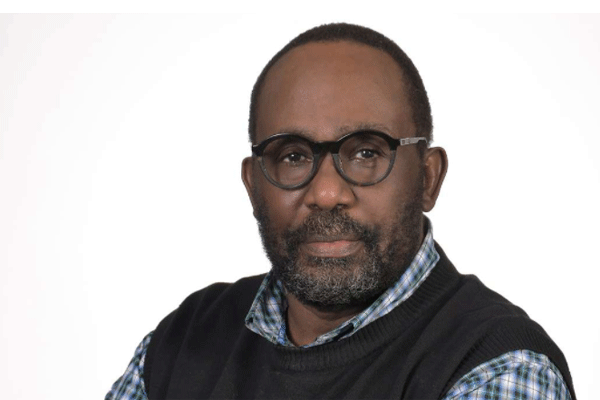Prime
Is it time for Monitor, NRM to ignore each other and focus on the people?

Author: Daniel K Kalinaki. PHOTO/FILE.
What you need to know:
- To stay in power, the NRM needs to start worrying less about what the Monitor writes about it and more about what people think and feel.
Few Ugandan companies live to be five, let alone 30 years. The Monitor has had quite the rollercoaster ride for which a breather – and a pint or three – is deserved. But it is not enough to celebrate Monitor without reflecting on the state of, and space for, public discourse in Uganda.
Since the Anglican missionaries set up the first newspaper, Mengo Notes, 122 years ago, public discourse in Uganda has been characterised by a dominant official view and varied attempts at organising and articulating alternative narratives. After the Anglicans launched a Luganda paper, Ebifa mu Buganda, and threatened to dominate the narrative, the Catholic White Fathers countered by launching Munno in 1912.
A decade later the locals joined the fray with Sekanyolya, which articulated ‘native’ grievances. In the decades that followed several newspapers (some really just pamphlets) emerged to promote different interests.
Although society was traditionally oral mass broadcast media were still years away so printed matter filled the void, with publication in local languages helping to surmount the steep hill of illiteracy. Radio and television, when they eventually came, were state owned and only propagated the dominant official narratives.
It is clear that the Ugandan state, before and after independence, has always understood the power of media and the need to invest in shaping the narrative. This began with the Uganda Gazette as the official English language newspaper, complemented by local language papers in Luganda, Ateso, Luo and Runyakitara before similar variants emerged in broadcast. The names have changed over the years but the purpose and principle have remained the same.
Secondly, the state has always tried to silence independent media. The colonial government passed a censorship law in 1948, and then banned three critical newspapers – Mugobansonga, Gambuze and Munyonyozi – a year later. All post-independence governments in Uganda, including NRM, have banned at least one newspaper, arrested or deported a journalist, or done all of the above. The targeted killing of journalists under Idi Amin was an extreme representation of the deep-seated dislike and discomfiture the Ugandan state has had with journalists and media houses they could not control.
The current government has repeated many of the attacks of previous governments but it also, much to its credit, liberalised the media industry in 1993 and allowed private FM radios and television stations.
Monitor at 30:Times change but the Monitor’s values don’t
This created several new dynamics. The overnight proliferation of media outlets should have had a diluting effect on critical independent media but this did not happen because most of the early radio and television station programming was entertainment, and religion.
So although radio quickly became the dominant medium, it continued to depend on critical print platforms for news and information. It wasn’t clear then, but this probably saved the Monitor when, between 1994 and 1996, the government banned advertising for its critical coverage. The demand for an alternative view supported the circulation, but the paper also benefitted from the growth spurts in the economy, which was also being liberalised, in form of advertising revenue.
The oral tradition in society eventually shaped radio programming through the popular ‘Kimeeza’ open-air talk shows that emerged in the late 1990s. These could have rendered print less useful but the NRM government inadvertently saved newspapers, including Monitor, by banning the talk shows, first in 2002, and again in 2009.
The more it tried to control the downstream consumption of critical coverage by the masses, the more important it made upstream critical content creators. The more the government tried to strangle the upstream creators, the more valuable it made the content they were creating.
Monitor at 30: Three decades of blood, sweat and tears
The growth of social media and user-generated content has brought new dynamics. It has loosened the state’s control over the narrative and shaken the underlying business models for mainstream media, particularly print. But it has also brought fake news and, some would say, lowered the quality of debate.
The state has spent 30 years trying to kill the Monitor. Yet today it needs a credible and even critical Monitor because there are few adults left in the room. The Monitor has spent 30 years trying not to be killed by the state. Today it is more likely to die from its readers abandoning it, than from a trigger-happy minister.
To stay in power, the NRM needs to start worrying less about what the Monitor writes about it and more about what people think and feel. To stay in business, the Monitor needs to focus less on what powerful people say and do more journalism that affects and improves the lives of its readers. It is dizzying, just thinking about it.
Mr Daniel Kalinaki is a journalist and poor man’s freedom fighter.
[email protected]; @Kalinaki




